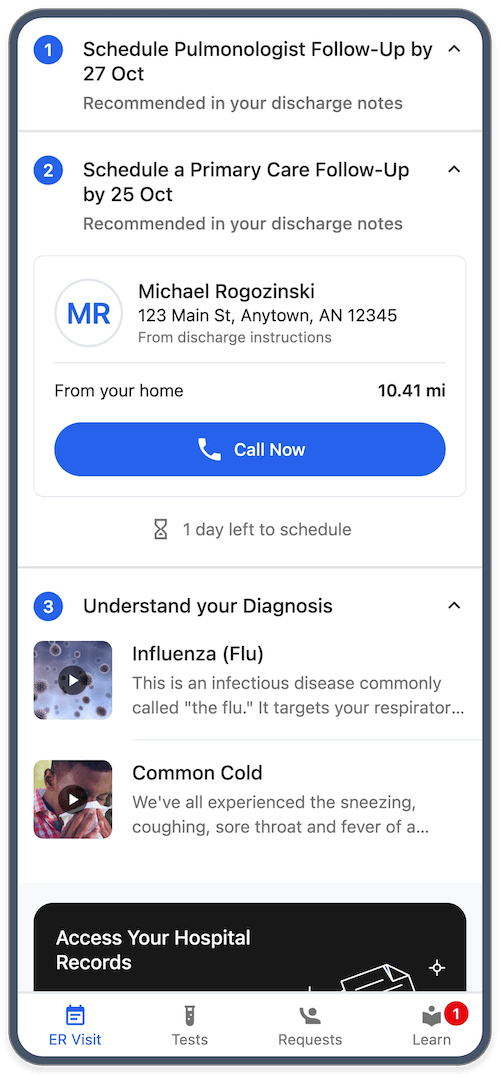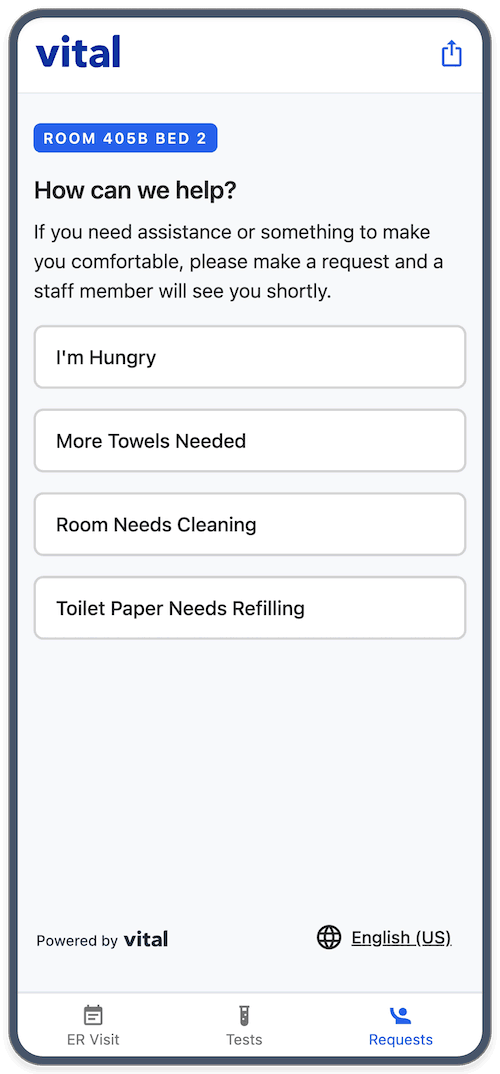
Function
Nursing technology solutions: reduce workload & improve patient communication
By tapping into real-time EHR data, Vital provides personalized guidance during ER and inpatient stays
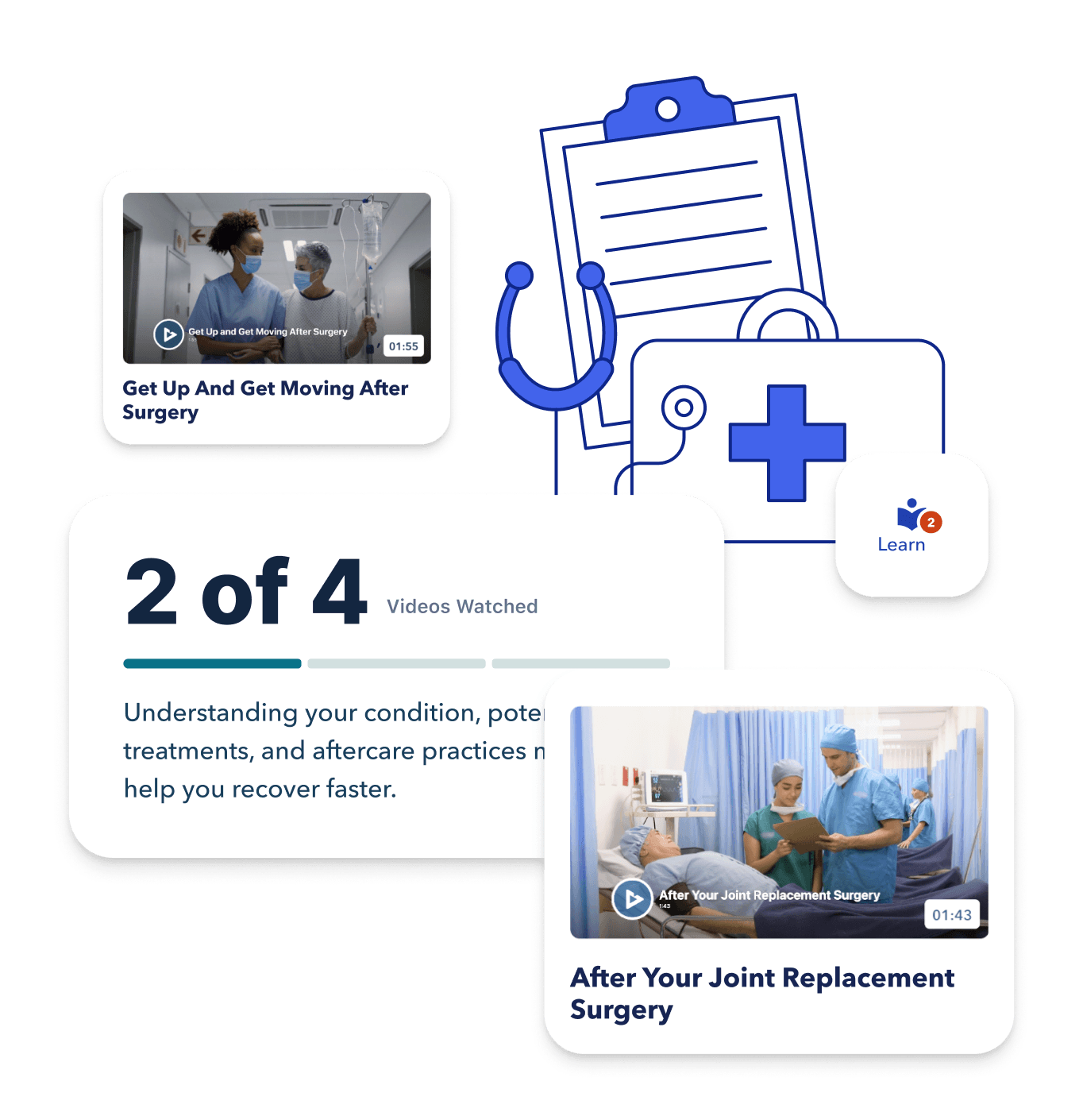
2,200hours saved (inpatient)
60%education engagement
200,000+tasks diverted from nursing
One less thing your nurses have to do, really
By tapping into real-time EHR data, Vital provides personalized guidance during ER and inpatient stays. AI explains test results in plain language, assigns education, and reminds patients of their daily goals.
By keeping patients engaged and answering questions about tests, wait times, and medications, nurses are freed up to do what they do best — care for patients.
The result is patient engagement between rounds that leads to shorter length-of-stay, lower readmissions, increased HCAHPS scores, and increased staff productivity.

Work at the highest level of your expertise
Here are a few of the ways Vital deflects routine work to help nurses:
With just a few taps on their mobile device, patients can alert staff to issues or ask for help. This results in more purposeful and efficient rounding. Imagine walking in with exactly what the patient needs, whether it’s water, a blanket, or just some reassurance.
Department-specific requests (e.g., food, room cleaning, etc.) are routed automatically to the correct team member.
AI automatically curates education recommendations for patients based upon each patient's clinical status ascertained through orders, physician notes, and other information. For example, education changes from pre-procedure prep to post-procedure recovery without nurses lifting a finger.
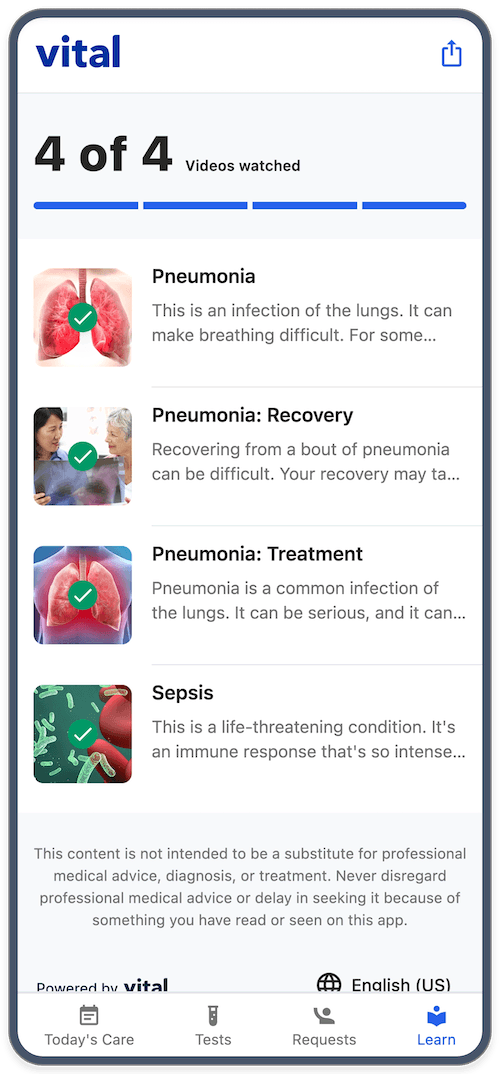
Real-time service requests & service recovery
Patients can request items (e.g., food, phone charger, etc.) and services (e.g. room cleaning, pet therapy, etc.) with just a few taps.
Request are routed to the appropriate department (e.g., Food & Nutrition, Environmental Services, etc.). This reduces burden for floor nurses so they can do what they do best — care for patients.
Requests are programmable, and request types can vary by location. For example, lactation consultation is limited to the maternity ward while toy requests to be available in pediatrics.
Patient-friendly test results with “sensitive” filters
At Vital, we believe that lab results should be more accessible and understandable. Instead of presenting results as chemical symbols with little context, we provide clear, meaningful descriptions for all common test components, making it easier for everyone to understand their results.
Videos for common labs include Complete Blood Count, or Understanding a CT Scan with Contrast.
We have 2,000 pages of content in English & Spanish tied to LOINC-level codes.
Hospitals can choose to delay abnormal or critical results. For example, “normal” results are usually released immediately, “abnormal” with a 30-60 minute delay, and “critical” results like cancer or loss of pregnancy may be omitted entirely.
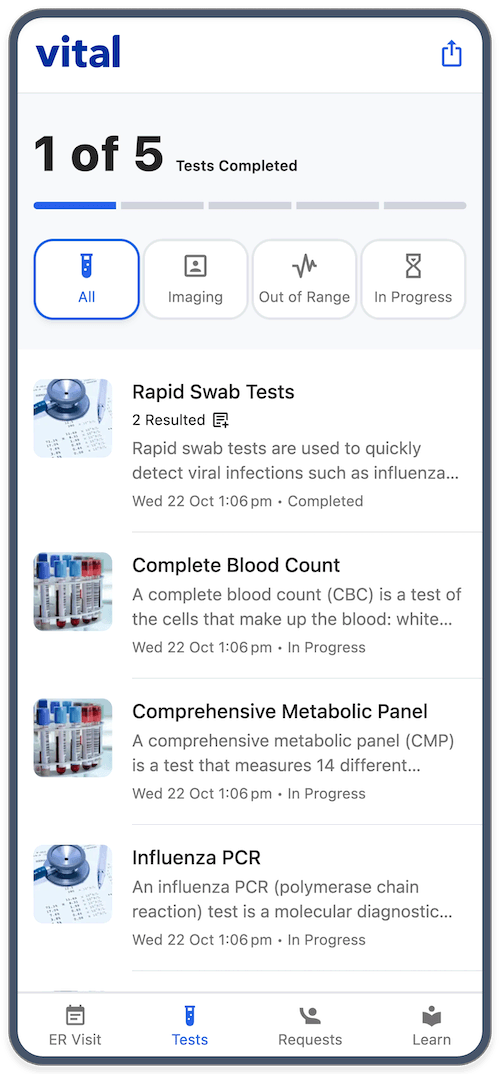
Generative AI to improve patient understanding
Radiology reports often present complex terminology that can be confusing for patients. While terms like "subluxation of the posterior talar fragment" may be clear to medical professionals, patients might struggle to understand them. Vital employs advanced generative AI in its innovative doctor-to-patient translator to convert medical jargon into clear, comprehensible language. By providing patients with understandable information, Vital empowers them to ask more relevant questions and enhances their adherence to care plans.
Try it yourself or see the launch at the Ai4 conference.
Discharge instructions that patients are motivated to follow
Many patients find it challenging to read through the 10-15 pages of discharge instructions they receive, and a significant portion may end up discarded.
Vital uses AI to parse discharge instructions into a 1-2-3 step checklist.
Vital summarizes the “to-do list” in discharge instructions for higher adherence to plan, resulting in lower readmissions and better health outcomes. This includes:
An AI summary of their medical plan & assessment.
Follow-up appointments with due dates for each.
A list of new medications, which pharmacy they were sent to, and pharmacy hours + directions.
Tertiary task list: sign-up for the patient portal, give a nurse compliment, and watch videos on diagnoses.
